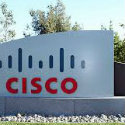Cisco is looking to leverage July Systems' technology to help enterprises locate customers, employees and visitors inside facilities.

Cisco is acquiring July Systems to help enterprises use WiFi to locate customers, employees and visitors inside facilities.
Cisco Systems Inc. (Nasdaq: CSCO) is angling to help enterprises provide better WiFi connectivity, as well as provide improved services, by learning more about how people are using facilities. For example, a big-box retailer might use location services to figure out which areas of a store are most heavily trafficked, and move sale products to those spots. These kinds of location services work by tracking the WiFi signals of the mobile phones that people carry in their pockets.
July Systems provides a cloud-based mobile experience and location services platform, which Cisco plans to use to beef up its Enterprise WiFi platform with indoor location services capabilities, according to a post on the Cisco blog Tuesday signed by Rob Salvagno, company head of corporate development and Cisco Investments.
Cisco previously partnered with July Systems in Cisco's Connected Mobile Experience (CMX), and Cisco offers similar capabilities to July's in Cisco's Meraki services.
Figure 1: 
Cisco expects to use July platform and technology for industries such as healthcare, government, logistics, manufacturing, sports arenas, hotels, education and retail. Cisco's CMX Engage customer include Intercontinental Hotels Group (IHG) and Westfield Corp, Salvagno says
Privately held July Systems is headquartered in Burlingame, Calif., with offices in Bangalore, India. The company will join Cisco's Enterprise Networking Group led by Scott Harrell, senior vice president and general manager. Cisco expects the deal will close in the first quarter of fiscal 2019, which ends Oct. 31. Terms and conditions are not disclosed, Salvagno said.
The company was founded in 2001, with $59.2 million funding in nine rounds from 10 investors, including Sequoia Capital India, Updata Partners, and Intel Capital, according to Crunchbase.
Related posts:
— Mitch Wagner ![]()
![]()
![]()
![]() Executive Editor, Light Reading
Executive Editor, Light Reading
About the Author(s)
You May Also Like











